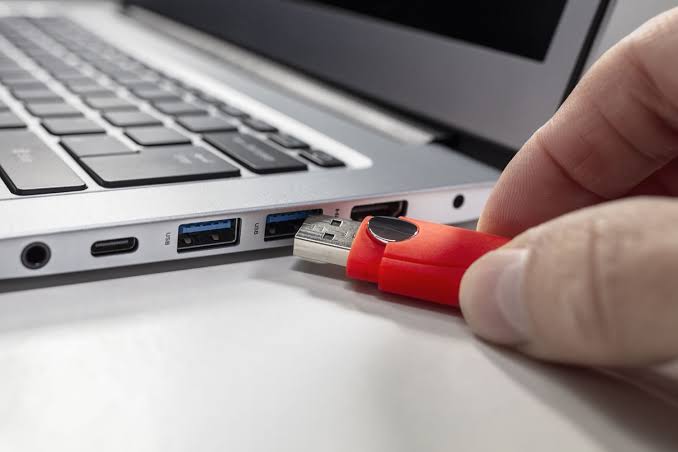“Whenever I plug my external hard drive, it connects and disconnects after a few seconds. All my work files are on the drive. Please, how do I make it properly connect?”
If your external hard drive keep disconnecting, Windows may prompt you to format the drive to be able to use it. Oftentimes, you don’t want to format it because that will make you lose all your data on it. So, what do you do?
In this article, we will share with you 5 simple solutions on how to fix external hard drive that keeps disconnecting without formatting the drive.
Stick with us!
Here are some of the reasons why your external hard drive keeps disconnecting:
Discussed below are the best 5 methods to troubleshoot your external hard drive that keeps disconnecting and reconnecting.
This solution focuses on inspecting all cables, ports, and software that determine the smooth functionality of your external hard drive.
🔌Check for USB Cables and the Computer’s USB Ports
Firstly, check the USB cable for loose or damaged parts. Faulty USB cables will cause signal not to be efficiently transferred to the computer, hence why your hard drive keeps disconnecting. In this case, connect your drive to the computer using another USB cable.

Secondly, confirm that the USB port is not bad. If the port doesn’t work, plug your drive into another port. Windows 10 computers sometimes have issues with connecting with USB 3.0. To be sure this is the issue, connect your drive to a USB 2.0 port. While you can continue using the USB 2.0 port, you will most likely experience slow data transfer. Thus, you need to update your USB 3.0 drivers and try the port again.
🔐Check for Software or Windows Defender Interference
Some software, especially security programs, system utilities, and Windows defenders can stop the functioning of your drive. Background operations triggered by these software can interfere with the connection, which is why your external hard drive disconnects randomly.
There is a USB selective suspend feature that comes with Windows. Its primary role is to preserve your computer from using unnecessary power when USB devices are connected, resulting in an automatic disconnect of your USB cable after a certain time. So, when your external hard drive disconnects randomly, it could be because the USB power-saving settings feature is ON.
👉On how to fix the external hard drive that keeps disconnecting through turning off the USB power saving settings, follow these steps:
Sometimes, your external hard drive keeps disconnecting because of the BIOS firmware. When your hard drive is connected to the computer via USB, BIOS may overlook it, resulting in improper connection. This is common with USB 2.0 and USB 3.0.
👉In this case, the solution is to disable the legacy boot process in BIOS. Shortlisted below are the steps to follow:
Before attempting this solution, make sure your external hard drive is backed up because repairing it can result in total loss of your data. If not backed up, you will need data recovery software to restore your data.
So, this solution is focused on checking the hard drive for bad sectors and fixing them. Bad sectors can lead to data corruption and poor connectivity, hence why your external hard drive disconnects randomly.
👉To repair hard drive bad sectors, these are the things to do:
When the system driver of the external hard disk is outdated, you might begin to experience a frequently disconnected external hard drive. All you have to do is uninstall previous drivers and update them with the most recent.
👉Here are the steps to follow:
If none of the solutions discussed above work, the next line of action is to contact a data recovery service provider. They are highly-skilled technicians who make use of sophisticated instruments and have a broad range of knowledge about how to fix external hard drives that keep disconnecting.
👉To get started, follow these steps:
After answering the common question “why does my external hard drive keep disconnecting”, here are some tips you might want to know:
When your external SSD keeps disconnecting, these are the options available to resolve it:
2. How to Fix the External Hard Drive Keeps Disconnecting on Mac?
When your external hard drive keeps disconnecting Mac, these are the solutions that can have it fixed:
3. After repairing hard drive bad sectors, how do you recover lost data?
Your lost data can be restored with ONERECOVERY, which is a professional data recovery tool that supports the complete retrieval of all kinds of data and files.
It involves downloading, installing, and launching the software. Then, follow these 3 simple steps:
The other day I connected my reliable USB drive to transfer some files and lo…
“I have an external hard drive of 16TB filled with office work. All my department…
“My Toshiba external hard drive is not showing up on my Windows 10 PC, but…
My USB drive would not work with the Mac. Do I need to format it…
"My computer doesn't recognize the WD passport as a hard drive, so it can't read…
Imagine you are ready to move files between your Mac and a Windows PC, but…